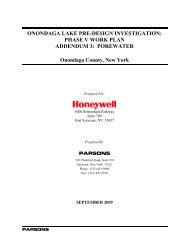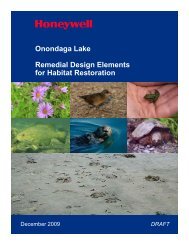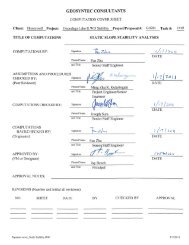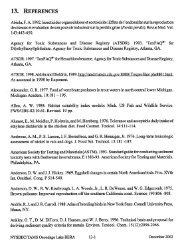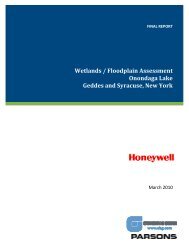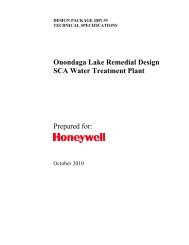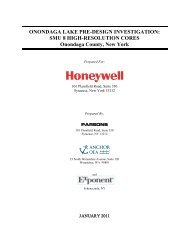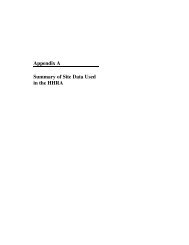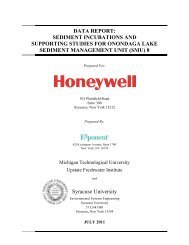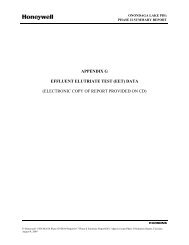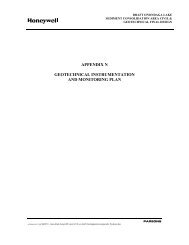Phase 1B Underwater Archaeological Report for the Onondaga ...
Phase 1B Underwater Archaeological Report for the Onondaga ...
Phase 1B Underwater Archaeological Report for the Onondaga ...
Create successful ePaper yourself
Turn your PDF publications into a flip-book with our unique Google optimized e-Paper software.
FINAL<br />
<strong>Phase</strong> IB <strong>Underwater</strong> <strong>Archaeological</strong> Resources <strong>Report</strong> <strong>for</strong> <strong>Onondaga</strong> Lake Superfund Site<br />
DIVING TECHNIQUES<br />
In October 2010 and June 2011, LCMM, under subcontract to Parsons, executed dive verification of<br />
selected anomalies in <strong>the</strong> project area (Figure 30). Dive operations were carried out from October 24<br />
through October 29, 2010, and June 20 through 29, 2011 under <strong>the</strong> direction of LCMM with dive vessel<br />
support provided by CRE. The fieldwork was executed by Arthur Cohn (LCMM Executive Director and<br />
Dive Safety Officer), Pierre LaRocque (LCMM Archaeologist and Assistant Dive Safety Officer), Adam<br />
Kane (LCMM <strong>Archaeological</strong> Director), Sarah Tichonuk (LCMM Archaeologist), Christopher Sabick (LCMM<br />
Archaeologist), Shipherd Densmore (CRE Survey Vessel Captain), Kenneth Thomson (CRE Oceanographic<br />
Technician) and Andrew Spilane (CRE Oceanographic Technician). Safety oversight was provided by<br />
Parsons through Kelly Miller.<br />
All dive operations were guided by <strong>the</strong> Dive Safety Plan created by <strong>the</strong> Lake Champlain Maritime<br />
Museum specifically <strong>for</strong> <strong>the</strong> work carried out in <strong>Onondaga</strong> Lake, and by LCMM’s Safe Diving Practices<br />
Manual. 112 These documents detail <strong>the</strong> specific safety and decontamination procedures that were<br />
maintained during all dive operations, and <strong>the</strong> specialized equipment that was employed to limit direct<br />
diver contact with <strong>the</strong> lake water and sediment. Each team member met <strong>the</strong> training and qualification<br />
requirements established in <strong>the</strong> U.S. Army Corps of Engineers (USACE) Safety and Health Requirements<br />
Manual (EM-385-1-1). 113<br />
Figure 30. Diver prepares to enter <strong>the</strong> water from <strong>the</strong> bow door of R/V Lophius (LCMM Collection).<br />
Dive operations were staged out of <strong>Onondaga</strong> Lake Park Marina. This site was ideal due to its central<br />
location to <strong>the</strong> project area, ample space <strong>for</strong> equipment preparation and break-down, and access to<br />
restroom facilities. All dive operations were per<strong>for</strong>med from <strong>the</strong> deck of CRE’s 26 foot (8m) survey<br />
vessel Lophius.<br />
Divers were outfitted with dive equipment designed to prevent skin contact with contaminated<br />
sediments (Figure 31). All dive equipment had been serviced and was certified at <strong>the</strong> time of dive<br />
operations. This equipment consisted of:<br />
42



